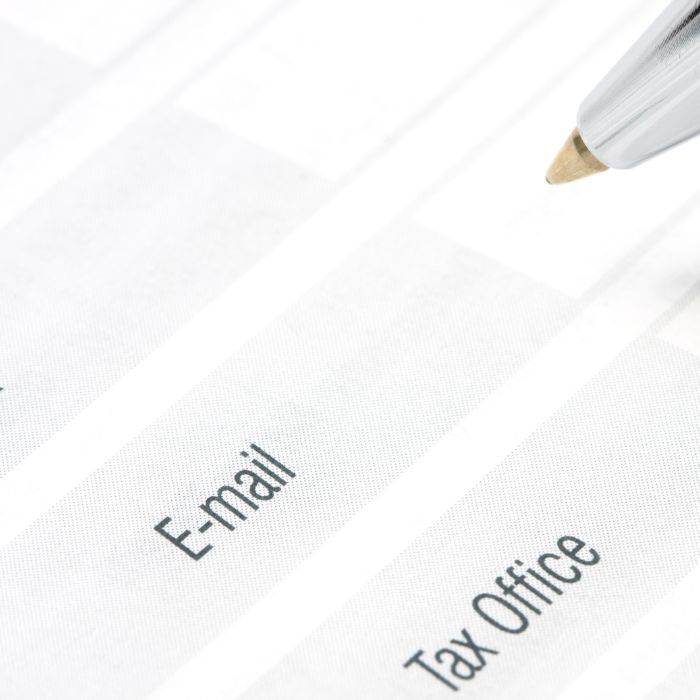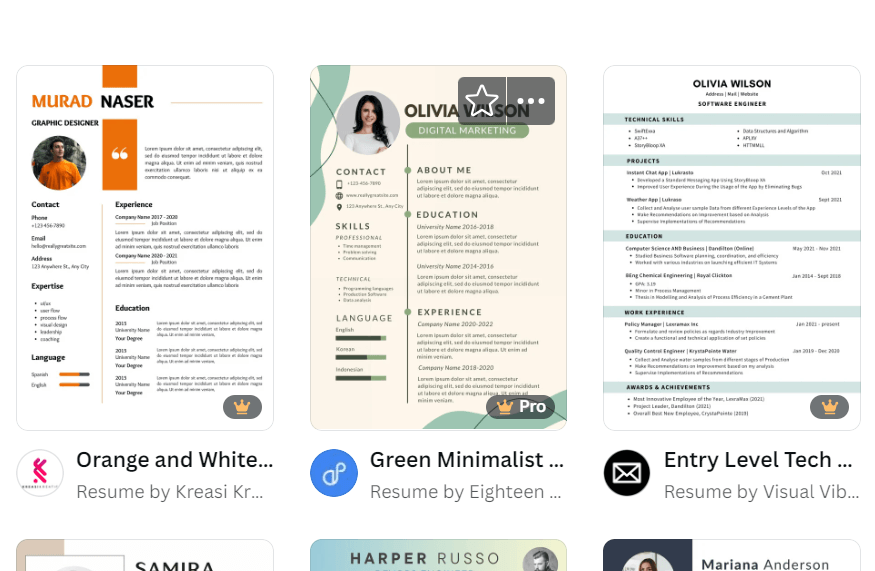The Ultimate Guide to Writing an Apprenticeship CV + Free Checklist
Heads up, folks! We are reader-supported. Some of the links are affiliate links. We may earn a commission If you click and make a purchase; see our privacy policy for details.
Embarking on an apprenticeship journey is the beginning of your new career path. Your apprenticeship CV is the key that unlocks potential opportunities. Unlike a regular CV, which focuses on a clear career path and professional experience, an apprenticeship CV emphasizes your willingness to learn, foundational skills, and relevant practical experience. It is a crucial tool that showcases your potential to employers, bridging the gap between your current capabilities and the skills you aim to develop through the apprenticeship.

Key Takeaways
1. Tailor Your Application: Customize each apprenticeship’s CV and cover letter. Align your skills with the role’s requirements.2. Engaging Personal Profile: Summarize your goals and skills in your CV’s personal profile. Make it relevant and captivating.
3. The Cover Letter’s Role: Use the cover letter to strengthen your application. Address it to the hiring manager for a personal touch.
4. Relevant Experience and Skills: Highlight skills and experiences pertinent to the apprenticeship. Use specific examples.
5. Professional Presentation: Ensure your CV and cover letter are well-formatted and error-free. Professionalism is key.
6. Address Gaps Honestly: Explain any gaps in your work history. Use them to show resilience and adaptability.
Crafting Your Apprenticeship CV’s Personal Statement

The personal statement is an important part of your apprenticeship CV. It’s a great chance for you to highlight your strengths and career goals. You can use it to express your excitement for the job and explain why you’re the perfect fit.
When writing your personal statement, start by thinking about your strengths. Consider the skills that make you stand out as a candidate, whether technical abilities, people skills, or a mix of both. For instance, if you’re great at solving problems, provide examples of using this skill. Be specific about your impact, using figures or outcomes if possible.
Additionally, talk about your career aspirations. You don’t need a detailed plan, but you should give employers an idea of your goals and how the apprenticeship fits them. For example, if you want to advance in engineering, you could mention your long-term goal of specializing in renewable energy solutions.
Furthermore, show your enthusiasm for the field you’ve chosen. Employers want people who are passionate about their work. You’ll make your application more convincing by demonstrating a genuine interest in the apprenticeship and the industry.
Remember that how you say things is just as important as what you say. Use clear, positive, and focused language, and aim to create a lasting impression that will persuade the reader to consider you as a strong candidate for the apprenticeship.
Contact Information

Crafting the contact information section requires precision and clarity. It’s vital to ensure that future employers can reach you with ease thus your details should be presented prominently.
Start with your name at the top of your CV, followed by essential contact details. Presenting these elements allows employers to identify you and know immediately how to reach out. Include your phone number and email address in a legible format. It’s advisable to have a professional email address and to place these details at the top.
Only a general location is required, such as the city or town you reside in. Avoid full home address details for privacy reasons as it’s often unnecessary at this stage. Ensure all information provided is current and spelt correctly to avoid any miscommunication.
Education and Qualifications

Your apprenticeship CV needs a solid foundation, and this is where your education and qualifications take centre stage. It’s crucial to precisely detail your academic track record, as it demonstrates your foundational knowledge and readiness for the specialised training an apprenticeship offers.
Focus on the areas most relevant to the apprenticeship you are applying for. Begin with your most recent qualifications and work backwards. Here’s how you can structure this information:
- GCSEs: Often considered a minimum standard, list your GCSEs, highlighting subjects that are most relevant to your chosen apprenticeship. For instance, if you’re looking into an engineering apprenticeship, emphasise grades in Maths and Sciences.
- A-levels: If you’ve completed A-levels or equivalent qualifications like BTECs, list these next. Be sure to note any subjects that have given you skills transferable to your apprenticeship.
Emphasise your grades in each qualification to provide a clear picture of your academic strengths, but remember, your education is not just about grades but also about the applicable knowledge you’ve gained that will serve you in your apprenticeship role.
The Professional Experience Section of an Apprenticeship CV

Crafting the Professional Experience section of your resume is a crucial step. This section displays your practical experience to potential employers. You can differentiate yourself from other candidates by highlighting your accomplishments and skills from your previous jobs. It is important to make this section clear and concise and to focus on your achievements to make a strong impression.
When organizing your employment history, it is important to present it in reverse chronological order, starting with your most recent position. Focus on relevant work experience to the apprenticeship you are applying for. When listing the company’s name, be sure to clearly state your job title, dates of employment, and the company name. To make your job title stand out, you can italicize or bold it. For example:
- June 2021 – August 2023: Junior Web Developer at Tech Solutions Ltd
Reflect on each experience and cherry-pick situations where you’ve demonstrated valuable skills to your target role.
Describing Key Responsibilities
You should articulate key responsibilities and outstanding achievements under each role, using action verbs to inject dynamic and proactive energy into your descriptions. For instance:
- Handled customer inquiries, resolving issues swiftly and efficiently.
- Spearheaded a small team project, improving team output by 15%.
It’s important to be specific in your CV and quantify your achievements with numbers or percentages to make them more impactful.
Skills and Abilities
When creating your CV for an apprenticeship, it’s important to showcase the skills and abilities that are relevant to the position you are applying for. Highlighting your key transferable and technical skills can help differentiate you from other candidates and make you a more compelling applicant.
Showcasing Transferable Skills on an Apprenticeship CV
Transferable skills are your core competencies that are valuable across various jobs and industries. Your ability to communicate effectively, your organizational skills, and your adaptability are prime examples which demonstrate to employers your potential to thrive in a new work environment. When detailing these skills, be specific; if you succeeded in a team project, mention how your communication skills and collaborative efforts contributed to the project’s success.

A good place to start when looking at specific skills and competencies for specific apprenticeships is on the Institute of Apprenticeships website. See this Content creator apprenticeship page as an example.
Technical and Soft Skill Development
Your technical skills refer to the job-specific abilities that enable you to carry out specific tasks related to your field of work. These abilities can include competencies in software, methodologies, or tools that are relevant to your chosen profession. Combined with your soft skills, such as problem-solving and critical thinking, they present a well-rounded professional profile.
If you’re pursuing an apprenticeship in a technical field, it’s essential to highlight any experience or proficiencies in relevant software or equipment. In each case, support your claims with tangible examples of how you’ve developed these skills, such as coursework, projects, or part-time work. This not only demonstrates your competence but also your capacity for growth and learning – a trait that is highly valued in apprentices.
This video from Resume Genius explains this topic well.
Additional Sections you could add to an apprenticeship CV
When creating your resume, provide more than just your educational and professional background. Including additional sections can help you present a more comprehensive view of yourself, both in terms of your work experience and personal life. These sections can offer employers better understanding your motivation and the values you can bring to their organization.
Certifications and Achievements
You should highlight your commitment to ongoing education and expertise in specific areas by including the relevant certifications in your CV. It would be beneficial to detail any certifications that complement your role as an apprentice. In addition to certifications, you can also mention your achievements that demonstrate your impressive milestones such as awards or recognitions you’ve earned either academically or in past roles. For instance, if you have been recognised for outstanding performance in a project or awarded accolades in competitions, it is important to include them in your CV.
Hobbies and Extra-Curricular Activities

Your hobbies and interests can provide valuable insights into your personality. and can be particularly useful if they match the field you are applying for. For instance, if you seek a digital marketing role, having hobbies such as blogging or managing social media can be relevant. Participating in extracurricular activities can demonstrate your ability to work well with others and manage your time efficiently, especially if you have taken leadership roles within these groups. If you have participated in volunteering programs, they highlight your dedication to the community and strengthen your work ethic and empathy, which are highly sought-after traits in any job candidate.
Formatting Your Apprenticeship CV
Adopting Professional Structure
When creating your CV, use a chronological structure. This means starting with your most recent job and working backwards. It’s important to keep the design simple and clean, avoiding any fancy fonts or colours that can distract from your content. A standard font like Arial or Times New Roman set at a size of 10 to 12 points, is usually preferred for its clarity and professionalism. Make sure to divide all sections and use bold headers for easy navigation.
Using Templates for Crafting Your Apprenticeship CV
Using a CV template can be a strong starting point, but tailoring it to your specific apprenticeship application is essential. Your CV should be uniform in font, colour, and layout to maintain a professional appearance. Consistency in your formatting helps employers quickly find the information they need. Adhere to formatting tips like aligning your text to the left and keeping margins consistent, usually around 2 cm throughout. Stick to a strong but simple template highlighting your skills and experience without clutter.

CV templates typically have sections for personal and contact information, a personal statement, educational qualifications, and work experience. Each section is designed to present your details clearly and concisely. When choosing a template, look for one that highlights your strengths and is relevant to the industry you’re applying for. For instance, a modern, dynamic template may help you stand out if you’re exploring opportunities in a creative field.
Using a two-column Erasmus CV template is a great example of how design can categorize information effectively while maximizing space. It’s essential to personalize the template to reflect your unique skills and experiences that make you an ideal candidate for an apprenticeship.
It’s crucial to fill in the template’s sections and tailor the content. Use action words and industry-specific terms to make your CV more impactful. Resources that offer guidance on writing an apprenticeship CV can be invaluable for support and inspiration.
Remember, the ultimate goal of using a template is to create a CV that speaks to your capabilities while meeting employer expectations. Keep your CV error-free, up-to-date, and tailored to the apprenticeship role you are pursuing.
References and Endorsements

We recommend including references and endorsements in your application as they can significantly strengthen your candidacy by demonstrating your capabilities and character. These references are a personal endorsement of your skills, work ethic, and potential as an apprentice.
When choosing your references, consider individuals who have directly observed your work or academic performance, such as former employers, teachers, or other professional mentors who can attest to your qualifications and character. Ensure that each reference’s relationship to you is clearly stated, mentioning how they can vouch for specific aspects of your personal and professional attributes.
Remember, a well-selected reference can be the pivotal point that makes your CV stand out.
Get It Right: The Apprentice’s CV Checklist
About to hit ‘send’ on your apprenticeship application? Make sure your CV is spot-on with our quick checklist. It’s straightforward, easy to use, and could be the key to nailing that first impression.
Frequently Asked Questions
How do I tailor my apprenticeship CV for specific industries, like electrical or hairdressing apprenticeships?
If you are creating a CV for a trade apprenticeship program, it is crucial to highlight your relevant work experience and skills that are specific to that industry. For example, if you are applying for an electrical apprenticeship, you should emphasize any electrical work or projects you have worked on, while a hairdressing apprenticeship CV should focus on your experience in styling or salon work.
What should I include in the personal statement of my CV?
Your personal statement is an opportunity for you to showcase your passion for the apprenticeship and your career goals. Ensure that it includes your reasons for choosing this particular apprenticeship, your relevant skills or experiences, and how this apprenticeship aligns with your career aspirations.
How can I effectively showcase my work experience on my CV?
List your work experience in bullet point form, and focus on roles and responsibilities relevant to the apprenticeship. Highlight transferable skills and any achievements or contributions you made in previous roles that would be valuable to your potential employer.
How important are transferable skills, and how should I present them?
Transferable skills are crucial as they demonstrate your ability to adapt to different work environments. Highlight these skills in your CV, providing examples of how you’ve applied them in past experiences or projects.
Can you provide tips for formatting an apprenticeship CV?
It is important to keep your CV concise and well-organized. Use bullet points for clarity and make it easy for the hiring manager to scan your qualifications. Ensure that your contact details, including phone number and email address, are prominently displayed and correct.
What’s the best way to list education and qualifications in a CV?
Start with your most recent educational achievements and work backwards. If you’re applying for a degree apprenticeship, include relevant details about your ongoing or completed degree.
How do I write a CV for an apprenticeship application without prior work experience?
Focus on your educational achievements, volunteer work, extracurricular activities, and any relevant projects or coursework. Emphasize your eagerness to learn and your potential as an apprentice.
Are there specific CV templates recommended for apprenticeship applications?
Yes, there are CV templates designed for apprenticeship applications. These templates help you structure your CV appropriately, ensuring you include all necessary sections like personal profile, education, and skills.
What should I consider when applying for an IT apprenticeship?
For an IT apprenticeship CV, highlight technical skills, IT-related projects, or coursework. Demonstrating a keen interest in technology and problem-solving abilities will be advantageous.
How do I address a gap in my work experience on my apprenticeship CV?
Be honest about gaps in your employment. You can address these in your personal statement or cover letter, explaining how you used the time productively, such as through learning new skills or volunteering.
What are some common mistakes to avoid in a CV?
Common mistakes include typos and grammatical errors, overly long CVs, lack of specificity in describing experiences, and failure to tailor the CV to the specific apprenticeship. Always proofread your CV and customize it for each application.
How should I structure the cover letter for my apprenticeship application?
Start with a clear introduction of yourself and the role you are applying for. If you know the hiring manager’s name, address the letter directly to them. In the body of the letter, succinctly highlight key aspects of your personal profile that make you a strong candidate, linking your skills and experiences to the requirements of the apprenticeship.
What is the significance of the personal profile section?
The personal profile section of your apprenticeship CV is a brief but impactful summary of your professional persona. It should encapsulate your career objectives, key skills, and any unique attributes or experiences that make you an ideal candidate for the apprenticeship.
In the cover letter, how do I address the hiring manager if I don’t know their name?
If you don’t know the name of the hiring manager, it’s acceptable to use a general greeting such as “Dear Hiring Manager” or “Dear [Company Name] Team.” However, it’s always best to do some research, such as checking the company’s website or LinkedIn, to find the appropriate contact person’s name.
Can I use the same personal profile for different apprenticeship applications?
While you can maintain the core elements of your profile, it’s advisable to tailor it for each apprenticeship application. Different roles may require different skills and qualities, so adjust your profile to highlight the most relevant aspects of your experience and personality for each role.


